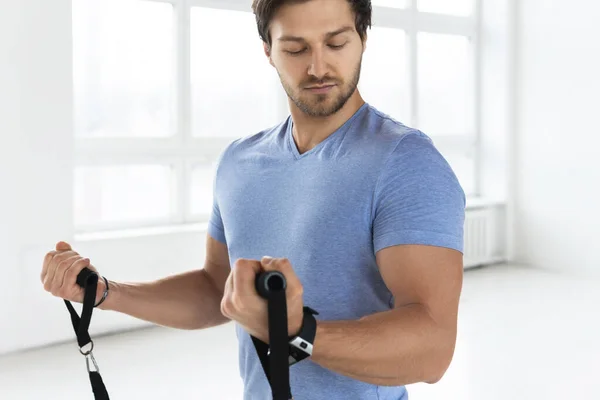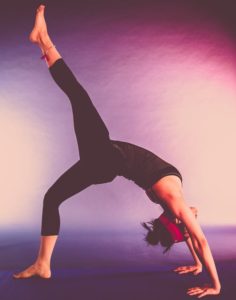Tools To Improve Our Fitness Journey
Also known as resistance bands, physical therapy stretch bands are simple and powerful tools essential in improving mobility, strength, and flexibility. Often used by rehabilitation specialists, athletes, and physical therapists, these bands offer a variety of benefits. They include enhancing physical performance, targeting specific muscle groups, and helping those recovering from injuries.
Thanks to their adjustable resistance, these stretch bands are ideal for various exercises, ranging from body stretches to rotator cuff exercises.
How to do full-body stretches
A full body stretch can be broken down to multiple muscle groups, including:
Chest Opener
- Hold the band with both hands behind your back
- Gently stretch the band by pulling both arms apart and lifting the chest slightly
The goal is to exercise the chest and shoulders. When doing the chest opener, it’s advisable to keep the spine neutral and avoid arching the lower back.
Triceps Stretch

- Hold one end of the band with the right hand
- Raise the arm overhead and bend the elbow behind the head
- With the left hand, grab the other end of the back and pull down gently
This exercise targets the upper back and triceps. During the exercise, don’t tilt the head forward and ensure to keep the core engaged.
Quadriceps Stretch
- Lie on the side
- Loop the band around the ankle
- Gently pull the foot towards the glutes with the band behind
The target muscle group for this exercise is the quads. For the best results, one should avoid arching the back and keep the knees aligned.
Hamstring Stretch
- Lie on the back
- Loop the band around one foot
- Extend the leg with the band straight up and pull it toward you gently while keeping the other leg flat on the floor
The target muscle group for this exercise is the hamstrings. For better alignment, it’s advisable to retain the hips on the floor.
How to do shoulder exercises
Like full body stretches, shoulder exercises also vary depending on the targeted areas. They include:
Shoulder Stretch
Hold the band with both hands, extended in front at shoulder height
Pull the band apart gently, squeezing the shoulder blades together
One of the more common exercises for the shoulders and upper back. One should avoid shrugging the shoulders and keep the arms straight.
Front Shoulder Raise
Stand on the middle of the band, holding it at the ends
Straighten the arms and raise them in front to shoulder height, and lower slowly
The exercise targets the anterior deltoids. It’s essential to avoid swinging and keep a slight bend in the elbows.
How to exercise the rotator cuff
For the rotator cuff exercises, the physical therapy stretch band exercises areas like subscapularis, infraspinatus, and teres minor.
Shoulder Internal Rotation

- Anchor the stretch band at waist level
- Hold one end with the elbow tucked close to the side and bent at 90°
- Rotate the forearm inward across the body
This exercise focuses on the rotator cuff muscle, the subscapularis. It’s advisable to control the band movement both ways, aiming to avoid band snap back.
Shoulder External Rotation
- Similar setup to the shoulder internal rotation exercise
- Instead of rotating the forearm inward, rotate it outward from the body
Another efficient rotator cuff exercise that focuses on the infraspinatus and teres minor. Avoid using the upper arm to move the band while aiming to keep the elbow close to the side.












More Stories
Reversing Age-Related Heart Damage Through Exercise
Exercises That Can Help Fix Your Posture
Uh Oh! You’ve Gained Some Weight